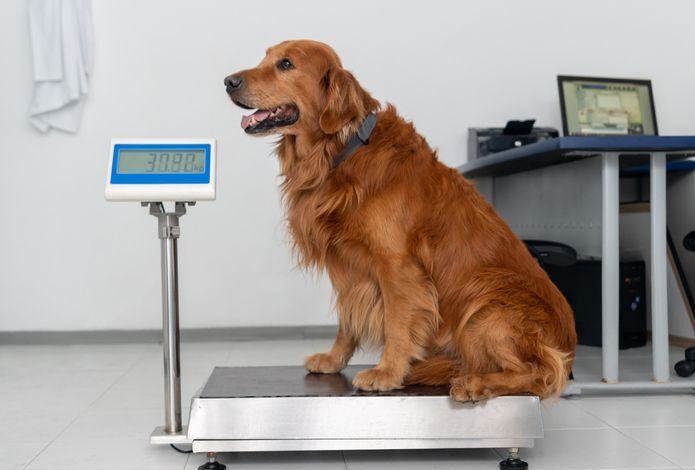How Heavy Should My Dog Be? – Dogster

As dog parents, our No. 1 concern is keeping our best friends as healthy as possible, so they live long and happy lives. “How heavy should my dog be?” is a question that often comes up and it’s an important one. Obesity is a big problem for our dogs. A study by the University of Liverpool and Mars Petcare found that obese dogs had shorter lifespans than dogs with a more ideal body weight score. For that reason, a dog weight chart is a useful tool all dog parents should know about.
What is a dog weight chart?
A dog weight chart gives a physical comparison of body conditions for dogs on a scale. On the lower end of the scale, typically labeled numbers one to three, the chart describes visibility of the dog’s ribs, lumbar vertebrae and pelvic bones, which are all signs of an “under ideal” bodyweight. Moving up the dog weight chart, numbers four and five describe a dog’s body at a healthy weight with the ribs palpable without excess body fat, a visible waist and an evident abdomen tuck from a side profile. Numbers six to nine describe an “over ideal” bodyweight with excess fat. Dr. Kathryn Primm, owner and chief veterinarian at Applebrook Animal Hospital in Tennessee, explains that the chart has been evaluated to apply to all adult dogs, of any breed or body type. Dog weight charts are not as accurate on puppies, she adds, because they grow so fast and have such different body types at different stages.
How to use a dog weight chart
Dog parents compare their dog to the criteria on the chart, looking at and feeling their dog’s body to do so, explains Dr. Primm. If you’re unsure, your vet should be able to help the first time you use it.
If your dog is “under ideal” or “over ideal,” it’s time to rethink how much you’re feeding and how much exercise your dog is getting. A trip to the vet is also advised, in case a medical condition is causing the weight loss or weight gain.
We all want our dogs to be around for a long time, feed your dogs the correct amount of food for the amount of exercise they are getting. And remember, watch those treats!
Source link






